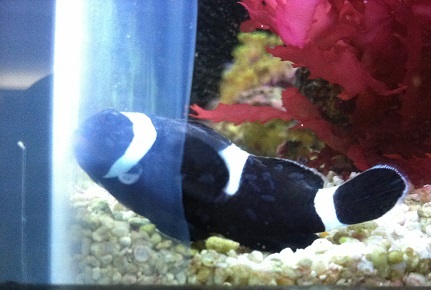Hi folks,
Just lately I have been experiencing somewhat random, but connected deaths in my reef.
Each fish has showed the same symptoms, which are rapid respiration and erratic swimming around the tank - none have shown any physically symptoms in terms of damage to the gills or scales. I have lost 8 fish over the last month or two, and have 5 remaining so want to get them treated as soon as possible - I'm just unsure if I should be treating for velvet or something else?
I had a Yellow Wrasse die on the 4th July, I didn't notice any symptoms on this fish , I just found it on the sand one morning.
Next my four Chalk Bass dwindled down to none starting from the 21st August - this is when I first noticed the symptoms of rapid respiration and erratic swimming. They all died within two weeks I'd say, but spread out.
Then my Convict Tang died one the 29th August, again showing the same symptoms.
Sometime in between then and now, I also lost my Tailspot Blenny, but I didn't see anything there, he just disappeared.
And finally, this Sunday gone I lost my Longnose Butterfly. Woke up to him wrapped around my MP40, still alive, but he was gone within 6 hours, showing the same symptoms as previous.
Any thoughts to give a lost sheep a helping hand?
Thanks
Andy
Just lately I have been experiencing somewhat random, but connected deaths in my reef.
Each fish has showed the same symptoms, which are rapid respiration and erratic swimming around the tank - none have shown any physically symptoms in terms of damage to the gills or scales. I have lost 8 fish over the last month or two, and have 5 remaining so want to get them treated as soon as possible - I'm just unsure if I should be treating for velvet or something else?
I had a Yellow Wrasse die on the 4th July, I didn't notice any symptoms on this fish , I just found it on the sand one morning.
Next my four Chalk Bass dwindled down to none starting from the 21st August - this is when I first noticed the symptoms of rapid respiration and erratic swimming. They all died within two weeks I'd say, but spread out.
Then my Convict Tang died one the 29th August, again showing the same symptoms.
Sometime in between then and now, I also lost my Tailspot Blenny, but I didn't see anything there, he just disappeared.
And finally, this Sunday gone I lost my Longnose Butterfly. Woke up to him wrapped around my MP40, still alive, but he was gone within 6 hours, showing the same symptoms as previous.
Any thoughts to give a lost sheep a helping hand?
Thanks
Andy




















